

|
| ABOUT | PRODUCTS | RESEARCH | BLOG | COMMUNITY |
|
|

Forks | History | Time Fork Ride | The Alpha Q | The ENVE Road Forks |
If there is one thing Tom loves to test and write about, it's bicycle forks. GENERAL CARBON FORK INFORMATION: A brief description of the various general types of "carbon" forks.
The development of carbon forks has taken many fits and starts over the years. The first widely distributed carbon fork was the Kestrel EMS designed by John Mouritsen. It used a steel steerer and crown (brazed together) bonded to a lay-up of carbon blades that fully surround the crown. The process of overlapping carbon blade material to bond to and cover the crown is now a rarely used manufacturing process. As carbon forks became more popular, a number of different fabrication techniques were developed and in some cases dropped. Time's Equipe Pro for example; started with a steel steerer bonded to an aluminum crown. Then pre woven carbon and polypropylene "socks" were drawn over flexible foam blade cores up onto the aluminum crown. Before the assembly was placed in the mold for resin injection and curing, a small piece of carbon cloth was wrapped down the front of the crown, underneath and up the back, very clean. WoundUp continues today using a wound blade design bonded into a machined aluminum crown. This design gives WoundUp a great deal of control over the ride and performance characteristics of their forks, more than most other forks we have tested. It also makes it relatively easy for them to make up custom forks with differing brake clearances, etc. The most popular high-end forks today use either "Full Carbon" or " Monococue " technology. Properly manufactured carbon forks are reliable light-weight forks. The ENVE 1.0 fork tips the scales at about 310 grams. The lightest forks, those under about 330 grams however, do all suffer in one way or another in the control department.
When Time first began to market a carbon fork in Europe many years ago, we were very excited to be given the opportunity to test it. Both Spectrum and Merlin were interested in getting another fork supplier in addition to Kinesis at the time and the Time option was exciting. After reading some good reports about the Time fork, Tom began testing it for possible use on Spectrum and Merlin road frames. As soon as he got on the original fork he found that it was too harsh for his tastes. It had good control characteristics, but he was able to feel every bit of the road surface. We contacted Time with our concerns and had a new prototype on the text bike in less than two weeks. The new version was a remarkable improvement. In talking with Jean Pierre from Time/France we found out that the "fix" was actually quite simple for Time to accomplish. The fork was made up of fiber "Socks" pulled up over a foam core. The original fork used only carbon socks while the new one had some "vectran" fiber built in. Vectran is a form of Polypropylene. In any case, the new version did a wonderful job of insulating much of the harsh characteristics of the original fork. As time continues to develop new forks, we'll keep testing them.
The Alpha-Q fork, developed by Dr. Kyu Lee, was the first of the "Carbon Rooted" forks. Dr. Lee's design enabled him to reduce the weight of his forks further than others could at the time and still retain the strength and rigidity required in a high end fork. The other distinctive characteristic of the Alpha-Q line of forks was their hand workmanship. The lay-ups of their forks were simply the most beautiful in the business at the time. In addition, Alpha-Q forks became known for their superior rigidity. They were available with a variety of steerer materials, diameters and blade shapes. AlphaQ offered both heavier and lighter forks for riders of different needs along with versions designed for tandems and Cyclo-X. A number of years after True Temper bought AlphaQ from Kyu, they closed the division, citing dropping profits and increasing liability costs.
ENVE is a Utah based company, formerly known as EDGE that began when a few engineers and production folks from existing bicycle composite component manufacturers decided to start their own company. Their forks are manufactured in a monocoque process. They are composite from tip to tail, no metal is used. They have become the high end composite fork standard over the last few years as they have been adopted by many of the best frame builders in the world. We offer ENVE forks with our titanium frames as a standard fork.
Seven Cycles has been offering composite forks for many years. Their "5-E" fork is their standard road fork and is available to us in a very wide range of offsets, lengths and dropout configurations. Of all the composite forks that we offer, it has the most traditional profile with a smooth gentle curve. This is our choice of fork when we need an offset or length that is out of the ordinary, and frequently our customers' choice when they choose their fork by appearance. An excellent choice in any case since the 5-E is by any standards a high performance fork. The Seven 5-E is a standard fork with our titanium frames.
Dario Pegoretti is one of the most respected frame builders in the world. He has been building frames under other names for decades for many of the most famous professional racers beginning in the early eighties. He now builds exclusively under his own name and is renowned for his amazing ability to create works of art that are second to none from a performance perspective. It took Dario a number of years to develop his composite fork, the FALZ. He was looking to distinguish the fork from others with both appearance and lateral stiffness. Although the FALZ looks similar to a number of other forks in profile with a gentle curve to the blades, Dario's crown area is very distinctive with the general look that you might expect from a traditional flat top crown. The FALZ is only available with 45mm and 50mm offsets and should not be used with front end geometries outside the range of 72.5 - 73.5 head angles. The FALZ is a standard fork with our titanium frames.
Serotta Cycles had been building composite forks for many years. Manufacturing had been done in southern California in the same facility where Reynolds Composites built their original Ouzo Pro and UL forks. The manager of the operation was Mike Lopez who ran the Reynolds operation there for many years. The Serotta forks were built using the same manufacturing techniques that Mike developed for the ultra reliable Ouzo Pro. These forks were available in a variety of stiffness ranges, rakes, clearances and even had options for fender mounts and mounts for cantilever brakes when required. The Serotta forks gave us a huge range of functional options to work with in designing a custom frame set and the quality of workmanship was unsurpassed. Sadly, the Serotta company ended operations a few years ago.
The Reynolds UL was developed by Tom Kellogg and Mike Lopez at Reynolds as the "new generation" of forks to come out of Reynolds over the winter of '06-'07. Tom and Mike spent about 16 months between the first concept discussions and final production. Those intervening months were spent in ID work (industrial design), process development, materials decisions, and a lot of prototype testing. Tom became known for riding the "fork of the week" by the other riders in his area. During one especially intense testing period, Tom rode four different prototypes over a two week period. The result? The UL was by far the highest high performance Hyper-Light fork ever made. With the steerer cut to 200mm, the UL weighed in at 270gr. The lightest fork which can match all of its stiffness characteristics weighed over 100gr. more at the time. The other forks in its weight class were considerably more flexible both laterally and torsionally. It is beyond sad that Reynolds got out of the fork business. Many years later, I still ride and race on prototype #8. At least I've got one.
It took me a few hundred meters into my first ride on a WoundUp many years ago to figure out that we had something special here. It took a couple hundred miles to fully appreciate the fork though. Of course my first reaction to the fork was, UGLY! In any case, it was pretty odd looking at. However, once on the bike it didn't look too bad. Now to what the fork does. Ultimately, the single biggest advance made by WoundUp relative to other forks was the torsional rigidity of the blades and fork as a whole. Most people assume that fork stiffness is most important in resistance to lateral forces. Actually, this is not the case. Torsional rigidity is considerably more important because sufficient lateral stiffness is very easily built into a fork while torsional rigidity is not. Try to picture what lateral forces do to a fork in the real world. There, you have a front hub clamped onto the front drops keeping them parallel. With the hub in there as a structural member, lateral deflections will, by definition, force the blades to deflect in a "S" shape curve, not a "C" shape curve. What this means is that forks (in the real world) are about twice as laterally stiff as you feel when you squeeze the dropouts together. Torsional stiffness is tougher to accomplish though. The front hub, as a part of the fork structure only helps by forcing the two blades to work in tandem as they resist torsional stresses. You might ask "what torsional stresses?" Actually, torsional stresses are not all that great, but they can really cause a fork to feel vague if not addressed. Take the Time Club fork as an example. Although it is very light and eminently comfortable, it is torsionally quite flexible. It is a great fork for putting on the miles. The problems develop when you put it in stressful situations. For example; hairy descents and hard criterium cornering can really stress the Club. Under these conditions, the Club fork will make you feel as though you are not connected to the front wheel. Indeed, it seems as though there is actually a lag time between handlebar input and bike reaction. You lose the immediacy if input. With a good competition fork like the ENVE, Pegoretti or Seven fork, this is not the case. The WoundUp is the next step. While the Seven, FALZ and ENVE forks are great forks and I would not have expected anything more from a fork, the WoundUp is clearly a great choice for a fork when the going gets seriously twisty. You just have to get used to the way that they look. |
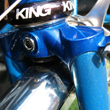
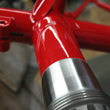
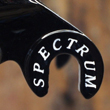
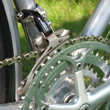
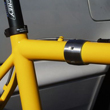
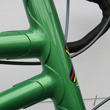
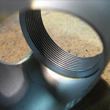








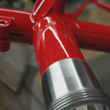
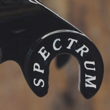
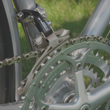
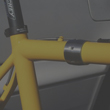


|